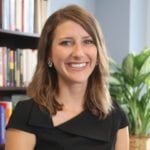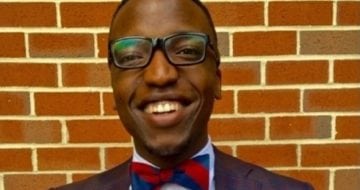“We must learn to live together as brothers or perish together as fools.”
-Dr. Martin Luther King Jr.
The American Youth Policy Forum works hard to maintain a nonpartisan stance in the political sphere, serving as a neutral convener for policy leaders of all affiliations. As individuals, however, we all have our own convictions and passions, most of which are not nonpartisan. A week ago I, like the rest of you, went to my polling station and voted for the candidates I felt are guided by the same values, beliefs, and information by which I am guided. Nothing about that experience, for me, was nonpartisan.
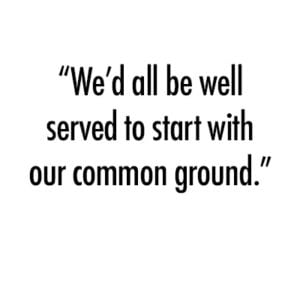 Now the election is over and regardless of whether we voted right, left, or somewhere in between, we have a lot of work to do if we want to continue to inform, develop, and implement policies that improve the lives of young people. This would have been true no matter who was elected. In a recent conversation hosted by the American Enterprise Institute, Resident Fellow Gerard Robinson said it well: “We have to move beyond what’s right and what’s left and do what’s just.” But how do we do this? How do we fight for what’s just when, as individuals, what’s just is so closely tied to our values and systems of belief, which are often strongly on the right or the left? I certainly don’t have the answer, but given that in two short months we’ll have a new President, a new administration, and many new faces on Capitol Hill, I think we’d all be well served to start with our common ground.
Now the election is over and regardless of whether we voted right, left, or somewhere in between, we have a lot of work to do if we want to continue to inform, develop, and implement policies that improve the lives of young people. This would have been true no matter who was elected. In a recent conversation hosted by the American Enterprise Institute, Resident Fellow Gerard Robinson said it well: “We have to move beyond what’s right and what’s left and do what’s just.” But how do we do this? How do we fight for what’s just when, as individuals, what’s just is so closely tied to our values and systems of belief, which are often strongly on the right or the left? I certainly don’t have the answer, but given that in two short months we’ll have a new President, a new administration, and many new faces on Capitol Hill, I think we’d all be well served to start with our common ground.
Below are a few strategies AYPF feels are reflective of our shared goals, which we hope can continue to be a priority in the coming years:
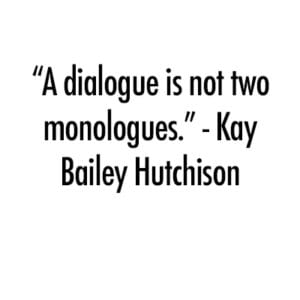 Supporting the integrated use of research evidence. Both the right and the left have praised the Every Student Succeeds Act (ESSA) for its emphasis on the use of evidence-based strategies. Despite their generally wide support, however, these evidence-related provisions are not well understood. Let’s work together to make sure that the states charged with implementing these provisions have what they need to make research evidence an integral part of their decision-making processes. (And here’s a shameless plug for my most recent post, Make Evidence Great Again. It’s timely, if nothing else.)
Supporting the integrated use of research evidence. Both the right and the left have praised the Every Student Succeeds Act (ESSA) for its emphasis on the use of evidence-based strategies. Despite their generally wide support, however, these evidence-related provisions are not well understood. Let’s work together to make sure that the states charged with implementing these provisions have what they need to make research evidence an integral part of their decision-making processes. (And here’s a shameless plug for my most recent post, Make Evidence Great Again. It’s timely, if nothing else.)
Emphasis on nonacademic skills and learning. Research unequivocally supports the idea that non-academic skills (or whatever they’re called) are not only a critical component of holistic youth development, they’re also the skills that employers say they need the most. In order for students to graduate ready for college, careers, and life post-high school, we must continue to support the development of social and emotional competencies that complement students’ academic education.
Protecting vulnerable populations. The Elementary and Secondary Education Act (ESEA) was created to serve those most in need, and its newest version, ESSA, is not going anywhere. We must continue to keep vulnerable populations a priority, such as homeless youth, students from low-income families, students of color, and other historically underserved youth. This means protecting programs that serve vulnerable students inside and outside of the classroom, such as 21st Century Community Learning Centers, which has received bipartisan support.
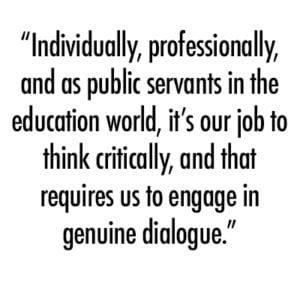 Expanding our definition of success. Most of us share the understanding that “young adult success” is no longer synonymous with a four-year degree. AYPF wants every young person to enter adulthood 1) as a lifelong learner, 2) earning a family-sustaining wage, and 3) civically engaged. We must also ensure that young people have access to multiple, clearly-defined pathways to a wide array of postsecondary options.
Expanding our definition of success. Most of us share the understanding that “young adult success” is no longer synonymous with a four-year degree. AYPF wants every young person to enter adulthood 1) as a lifelong learner, 2) earning a family-sustaining wage, and 3) civically engaged. We must also ensure that young people have access to multiple, clearly-defined pathways to a wide array of postsecondary options.
Breaking down silos. I know “silo” is everyone’s favorite buzzword. But truthfully, the reason it’s a buzzword is because it matters, and it’s something felt by all of us. We can do better to link our education efforts to what’s going on in labor and health and child welfare and transportation. We can more deeply engage with the workforce and with higher education when serving our K-12 students. And we can certainly do a much better job of listening to those in the classroom, both teachers and students. Ultimately, we must expand the conversation and break the “bubble” in which we sometimes find ourselves.
On a final note, I’m of the conviction that we must work to break down our silos on a personal level, as well. This is not a call to back down from our convictions. I certainly won’t, and I don’t necessarily think that’s required in order to be nonpartisan or objective. What we can do, if we really want forward progress, is listen. And remember the purpose and the value of true dialogue. I’ll never forget a remark made by Kay Bailey Hutchison at my college graduation ceremony – “a dialogue is not two monologues.” Individually, professionally, and as public servants in the education world, it’s our job to think critically, and that requires us to engage in genuine dialogue in order to move forward in an objective manner. It’s what’s productive, it’s what’s effective, and it will ultimately help us work together to do right by young people. That may be overly optimistic, but it’s a starting point.
Carinne Deeds is a Policy Associate at the American Youth Policy Forum.



